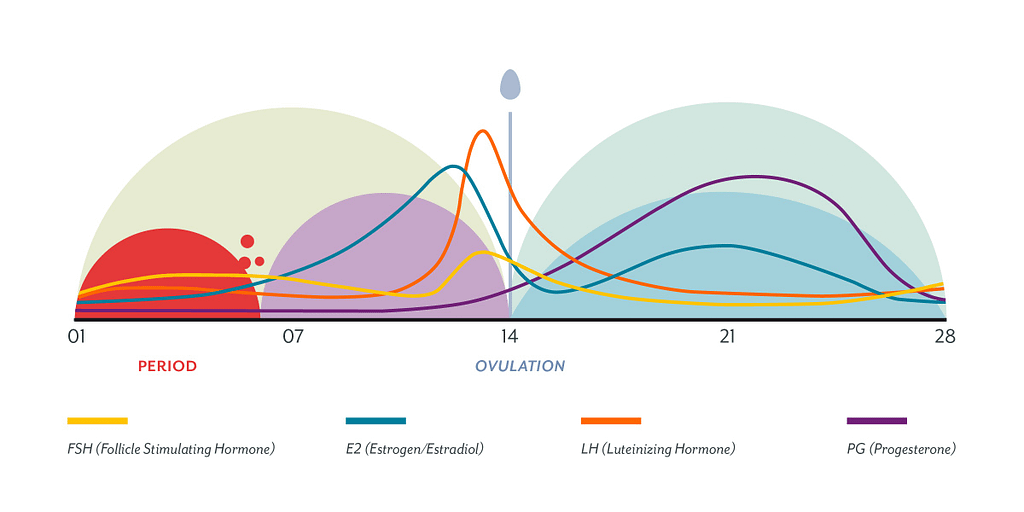Welcome to 8th grade health class.
Here’s a uterus: 🍐
Here’s how your period works: 📈🥵💦
Here’s how to fix any problems with it: 💊
Now let’s move on to learning about smoking.
That might seem like a terrible summary of what most women are officially taught about their menstrual cycles, but it’s pretty much what I grew up knowing—and it’s probably what you grew up knowing, too. We generally do a terrible job teaching girls about their own bodies.
In fact, many of us go our entire lives without knowing much more than this. Until we have problems.
Then, all of a sudden, we have to get intimate with our intimates.
I’m flabbergasted that this is the reality for so many women, and I’m making it my mission to ensure that the women of Fit House know more. What should a healthy menstrual cycle look like? How do weight training and nutrition affect the look of a healthy cycle? And what can women do, using training and nutrition, to change the health of their own cycles?
I made this my mission partly because I’m in my early 40s and having all kinds of issues myself—skin issues, hair issues, energy issues, libido issues, digestion issues, mood issues. You name it, my body is doing it.
But I’m also making it my mission because I know how important menstrual health is to the overall health of my female clients. Women’s health is menstrual health. We cannot address our leanness, our heart health, our strength, or our other health markers without addressing our menstrual health.
So here’s what I’m going to be sharing:
- How a healthy menstrual cycle should work
- How a healthy menstrual cycle is tied to strength training
- How training and nutrition change the health of our cycles
- Strategies for reducing symptoms and making our cycles more pleasant
Let’s start with an overview of #1 and #2 today.
PHASE 1: Follicular
Day 1 through the day you ovulate—typically around 14 days. This phase includes menstruation.
Day 1 is the first legit day of your period. During your period, follicle stimulating hormone (FSH) rises (gold line in the chart) to tell your ovaries to prepare a follicle. Follicles are the things that release eggs at ovulation. You’ve got lots of follicles, but typically only one will be mature enough to actually release an egg each cycle. The dominant follicle starts producing estrogen (blue line), which rises steadily until the follicle releases its egg. In the meantime, your uterus responds to the estrogen increases by thickening its lining.
This phase typically feels fine. As estrogen increases, your energy might increase, and you might find that the week just before you ovulate is a great training week. Your body temperature should be stable, and your resistance to fatigue should be high.
Eventually, estrogen levels get high enough to trigger the release of luteinizing hormone (LH, orange line), which stimulates ovulation to occur and trigger the next phase.
PHASE 2: Luteal
From the day after you ovulate until your next period starts—typically another 14 days.
After releasing an egg, that follicle becomes what’s called a corpus luteum and continues to produce estrogen. It also starts producing progesterone (purple line) until about halfway through this phase. At that point, if the egg is not fertilized, the corpus luteum breaks down, dropping estrogen and progesterone levels and triggering menstruation. While this is happening, the lining of the uterus stops thickening and starts secreting its own compounds—prostaglandins. These chemical messengers trigger contractions in the uterus and, combined with the drops in estrogen and progesterone, the start of menstruation.
This is the phase where shit hits the fan. On the day you ovulate, your body temp will increase, typically around 0.4 degrees per day, and will continue to increase as progesterone increases. Your higher body temperature during this phase can make you feel fatigued from training faster. The drop in hormones just before your period may give you a day or two of extra exhaustion, and PMS symptoms may interfere with your training. PMS symptoms can include everything from breast soreness to cramps to fatigue to nausea to headaches to acne to bloating to mood changes. We are taught that these symptoms are normal, but if they interfere with your life, they are not part of a healthy menstrual cycle.
There’s evidence that your body handles carb and fat metabolism differently during the luteal phase, too; while the follicular phase increases your body’s ability to metabolize carbs, the luteal phase seems to force the body to rely more on fat for fuel.
All of these things may make training feel tougher during your luteal phase.
NOTE: If you are using hormonal birth control, none of the above applies to you.
🏋️♀️🏋️♀️🏋️♀️️
Given what we know about these phases and their effects on training, should you change your training to accommodate your hormone shifts?
I say no.
In fact, I think that, barring any medically defined disorders (for example, PCOS and endometriosis), your menstrual periods should be easy to fit into your training periodization.
Lots of trainers say otherwise, so let me justify this. First, I have found that the difference in strength and fatigue levels throughout a healthy menstrual cycle are not dramatic enough to warrant a change in training. If a woman experiences dramatic differences between phases, that seems indicative to me that other changes, not training changes, need to be made to reduce those shifts.
In other words, rather than modifying training, address the problems with the menstrual cycle instead. Fix the cycle, and the training issues will get fixed, too.
So how do you figure out if your own cycle fits the healthy model?
Track it.
Start on day 1, the first legit day of your period. Track your flow, symptoms, body weight, moods—everything. Then figure out if you’re ovulating. Many women can tell they’ve ovulated based on mood, skin symptoms, cramps, cervical fluid, and libido changes, but to be 100% sure you’re ovulating, you can record your basal body temperature each day. As soon as it starts rising, you know you’ve sprung an egg.
After ovulation, keep tracking PMS symptoms. Get at least a good month of data, and then compare what you’ve tracked to what you recall feeling in prior months. Look for patterns. Has your flow changed? Are you always tired around day 14? Does your skin start to do strange things about a week after ovulation? Do you have better hair days during days 1-14 versus the second half of the cycle? When are you hungriest? In the most pain? The most irritable?
In Part 2, we’ll talk about how training and nutrition can change and improve your menstrual cycle health. And then we will address how we can tweak our nutrition and supplements to create healthier, easier menstrual cycles.
Let’s get Fit House’s female folk smart about their muscle and their menstrual health.
About the author

Kristen Perillo
Kristen Perillo is a teacher by day, trainer and nutrition coach by night. She's also a Star Wars nerd, writer, dog (and cat) mom, peanut butter junkie, and Seinfeld devotee. Fitness has done nothing but make her life better, and she is privileged to show other people that it will do the same for them.


Recent Comments